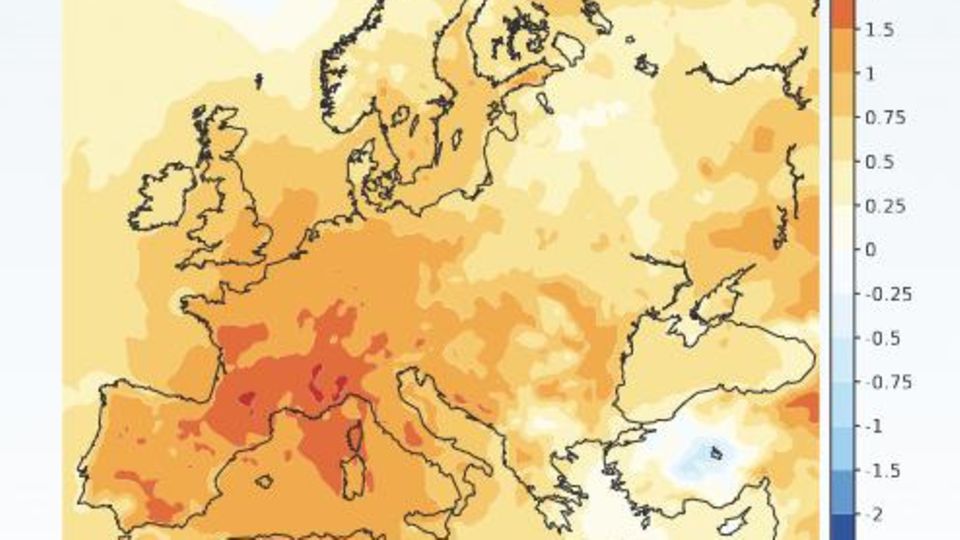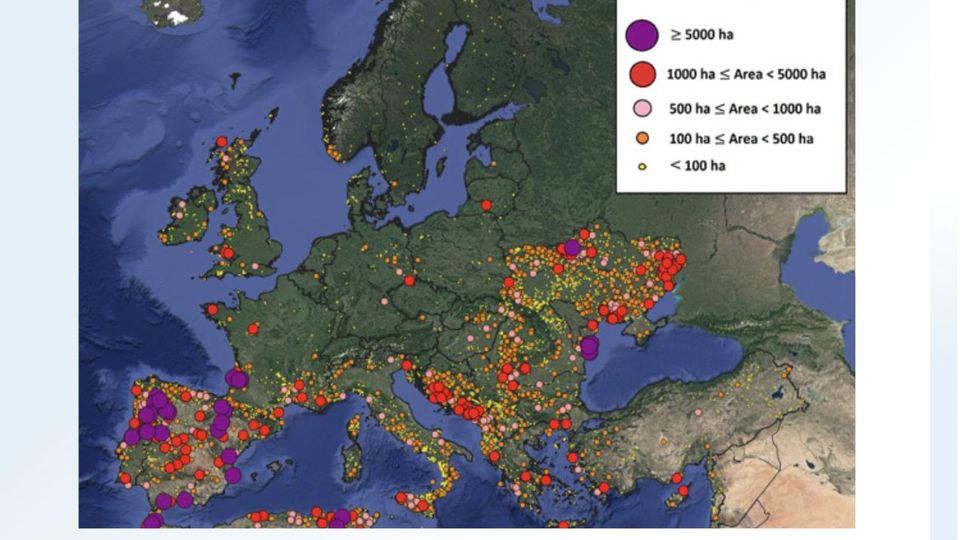Copernicus climate report
2022 was hotter than any year before. A current climate report shows what this means for us
The La Baells reservoir north of Barcelona: In March, the water was practically dry – residents prayed for rain at a mass
© Emilio Morenatti/AP/DPA
Climate change means records – in terms of temperatures, precipitation and weather events. The current report from the Copernicus earth observation program shows how badly Europe was affected last year.
Too hot, too dry, too extreme: This is probably the best way to summarize the climate and weather conditions of the past year. While years ago climate change was still taking place on remote island states far away from Europe, the inhabitants of the continent are now experiencing its consequences up close. Great Britain recorded new heat records with 40 degrees Celsius, in southern Europe people fought and fled from large-scale fires, while rivers such as the Rhine emptied completely or reached record-breakingly low levels.
In the EU, 2022 was the warmest year since weather records began. show that Data from the Copernicus earth observation program. A look at results and consequences:
temperature records
… was recorded in particular by the countries bordering the north-west of the Mediterranean, but also in north-eastern Scandinavia. It was too warm there in summer, autumn and winter, while spring was exceptionally cool. In some places, however, daily temperatures in March and May were between eight and ten degrees above average. With a Plus of 1.4 degrees was the summer in Europe the warmest since temperature measurements began. The number of warm days increased by 30 percent in south-west and west Europe.
“The long-term trend towards higher surface air temperatures over European land regions is continuing,” says the climate report.

Average air temperature deviation in 2022 compared to the period 1990 to 2020
© Screenshot Copernicus
Since the pre-industrial era, average air and sea temperatures have risen by 1.2 and 0.9 degrees, respectively. However, how fast they are increasing varies by region. According to the Copernicus report, the air on land warmed up about twice as fast as over the oceans. At three degrees, the Arctic has warmed the most in the world, while Europe is warming twice as fast as the global average. As a result, this part of the world is heating up faster than any other region of the world.
Record loss of glacier ice in the Alps
In addition to the above-average temperatures in summer and winter, precipitation deficitwhich was particularly noticeable for residents and tourists in the Alpine regions: The snow phase in parts of central and southern Europe shortened by 20 days, in some places it was even up to 50 days. Climate researchers are already talking about a long-term trend. However, less snow also means less meltwater from which numerous European rivers and lakes feed. According to the European climate report, a winter with little precipitation can delay snowmelt in spring.
Glaciers are also a concern for climate scientists. According to the Austrian Alpine Association, the Austrian ice giants are melting faster than in documented glacier history. This is also confirmed by the Copernicus report. He certifies that record-breaking loss of ice on Alpine glaciers. “While global glacier mass loss is significant, the European Alps are among the regions where glaciers are shrinking the most,” it said. Since the 1990s, the retreat of glaciers has increased again. Depending on the region, European glaciers lost between nine and 34 meters of their ice thickness.
Last year alone, 5 cubic kilometers of ice were lost in the European Alps. The reason for this is the lack of winter snow and the unusually warm summer.
Climate researchers are also observing something similar in the Arctic: the proportion of multi-year ice is declining, while that of one-year ice is increasing. It should stay that way in the long term. That sea ice lasted and expanded for years was a thing of the past.
Record-breaking number of sunshine
On the other hand, the report initially gives a positive assessment of the fact that the number of hours of sunshine between January and July by 130 hours elevated has. The Cloud cover shrank by four percent. The only problem: strong sunlight combined with high temperatures increase the concentration of ozone. actually important trace gas in the atmosphere protects the earth from the sun’s harmful ultraviolet rays. However, in excessive amounts it can be harmful to health. It irritates the respiratory tract, causing a cough, headache or difficulty breathing.
Increased risk of fire
Heat and drought in 2022 ensured that the Fire risk is above average almost all year round failed. This favored major fires between March and October. It is estimated that 90,000 hectares burned on the European continent. France, Portugal, Spain, Slovenia and the Czech Republic were the hardest hit, with around 10,000 hectares each burned.

Distribution and extent of fires in Europe in 2022
© Screenshot Copernics
Sources: Copernicus report, Federal Environment Agency


